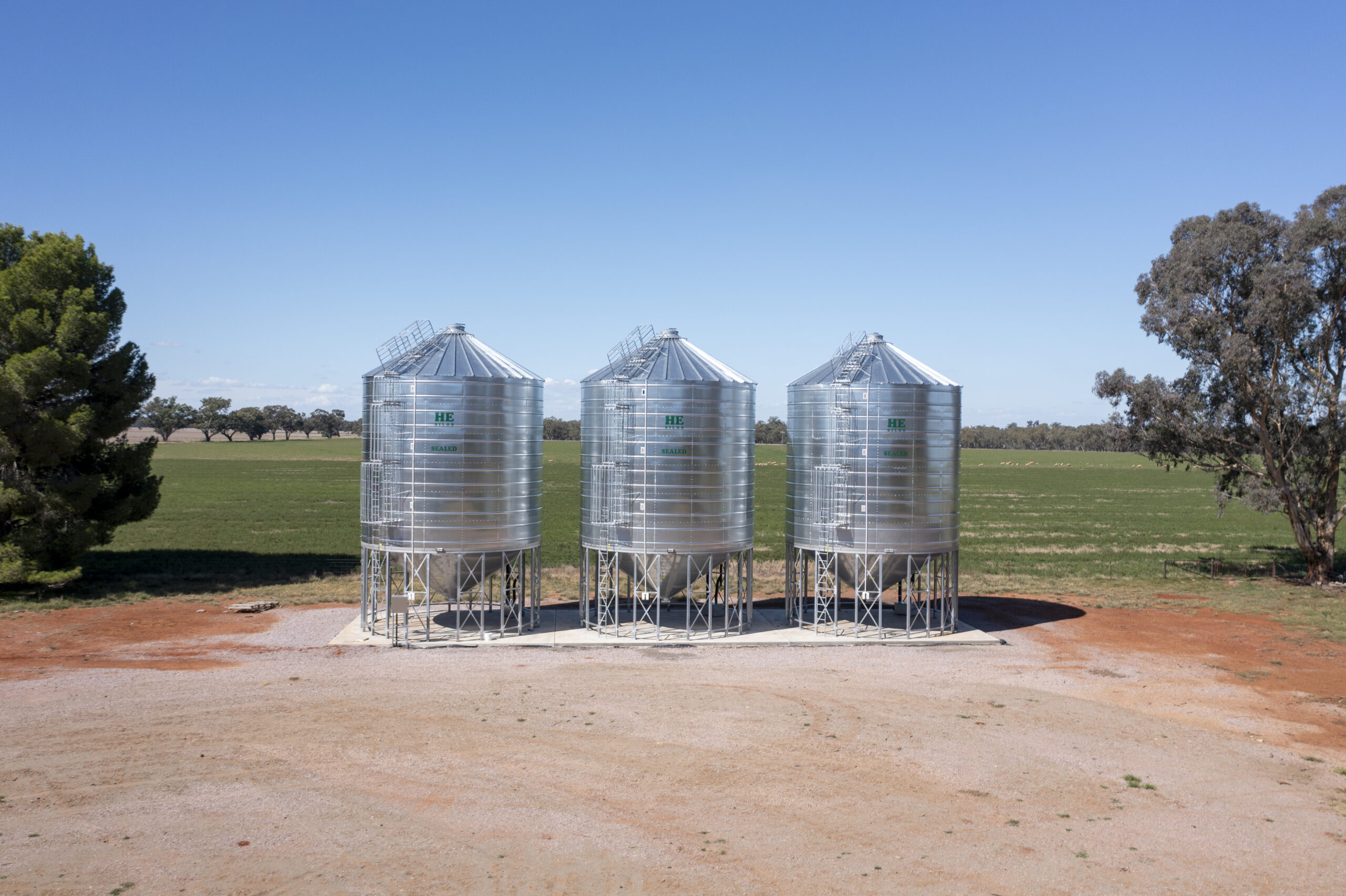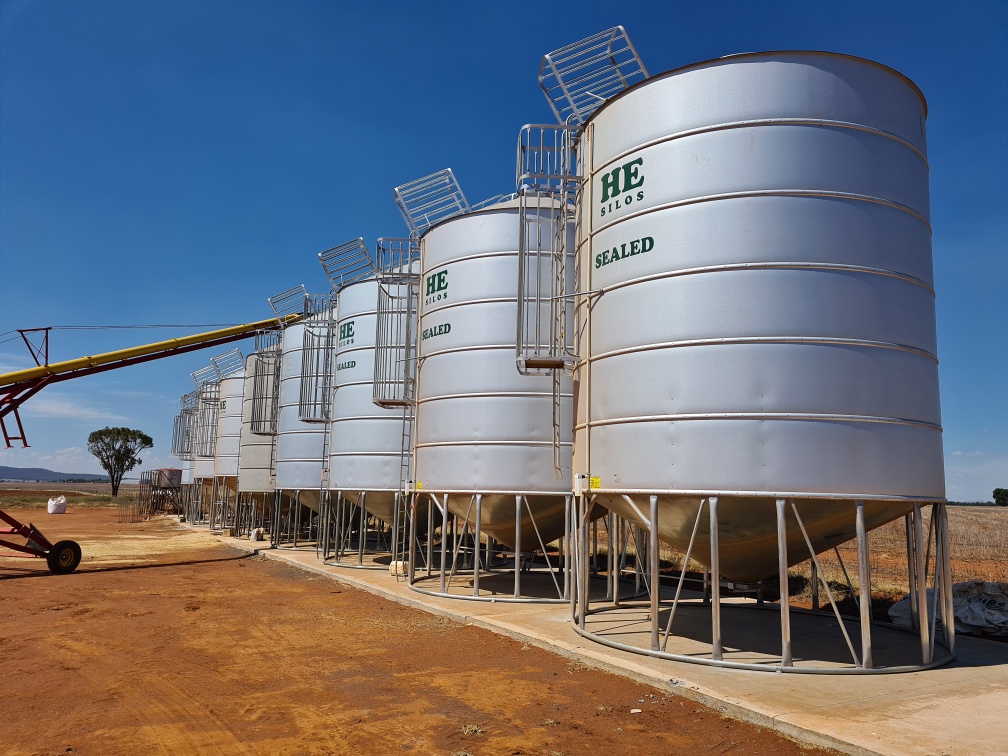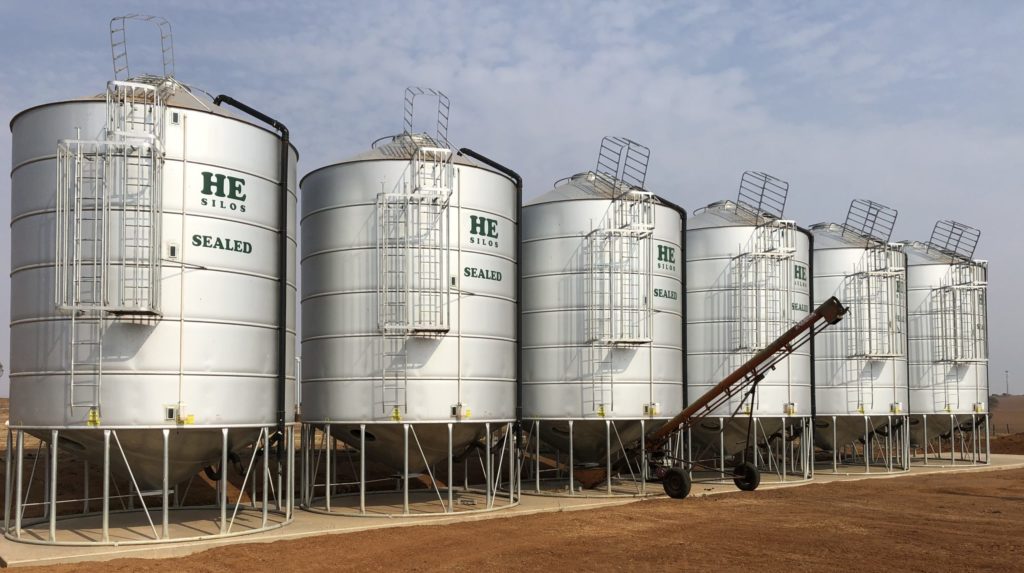Safe Storage and Handling of Grain

Keeping grain in optimum condition is the first step in preventing entrapment in flowing grain. Many grain entrapments have occurred when a person went into a silo storage to break apart mouldy or crusted grains. Good storage management will help prevent mouldy grains and spoilage.
Grain is also handled at a faster rate and in more vast quantities today than it was even 10 years ago, and utilising todays automated equipment also means many farmers work on their own for a large part of the time.
With this in mind, it’s imperative that everyone involved in the agricultural industry is aware of the many hazardous situations that are prevalent, not just around Harvest time, but all year long.
With that in mind, it’s the goal to minimise and mitigate as much risk as possible with some of the more common issues that arise.

SUFFOCATION
This refers to “Grain Drowning” and is one of the most common causes of death around grain silos. This typically happens when a person enters a silo of flowing grain. The force of the grain can pull a person under within seconds. Due to the weight of the grain, a person can be trapped knee deep, and it can be impossible to get out without assistance.
CRUSTED AND SPOILED GRAIN
Crusted grain can also cause grain drowning- When grain is removed from the silo, and a cavity can form below the surface of the crusted grain- While walking on the crusted grain, a person’s weight can break through, and become trapped and suffocate
CARBON DIOXIDE POISONING
When grain is stored that is high in moisture, fermentation occurs that can produce carbon dioxide- this results in an oxygen deficient atmosphere. This can cause breathing issues, headaches, dizziness, and in some cases death.
DUST
Seems innocuous but Dust can also release mould spores, which can seriously affect the respiratory system causing sections of your lungs to turn “hard” and non-functioning
Wearing an approved mask with ventilation is the only option to ensure your health.

FUMIGANTS
Fumigants are another hazard to be aware of and following all the manufacturer’s instructions and adhering to all safety advice can eliminate any potential for poisoning.
Don’t let a grain handling and storage accident happen to you or your employees or family.
Discuss the potential dangers there may be and emergency procedures you need to have in place. Accident prevention procedures and installing safety design features on storage and handling equipment can prevent injuries and fatalities.
Safety Measures
Don’t enter a silo with flowing grain
Don’t enter a silo where you suspect Carbon Dioxide is present
Shut off and secure all power sources before entering a grain storage silo
Maintain ALL protective guards on equipment
Install safety measure on grain silos and handling equipment
Wear a Dust Mask
Use correct fumigation practices
Instruct children, employees and others present to stay away from powered equipment
BE PREPARED FOR EMERGENCIES
See you all next time!
Steve, The Silologist


